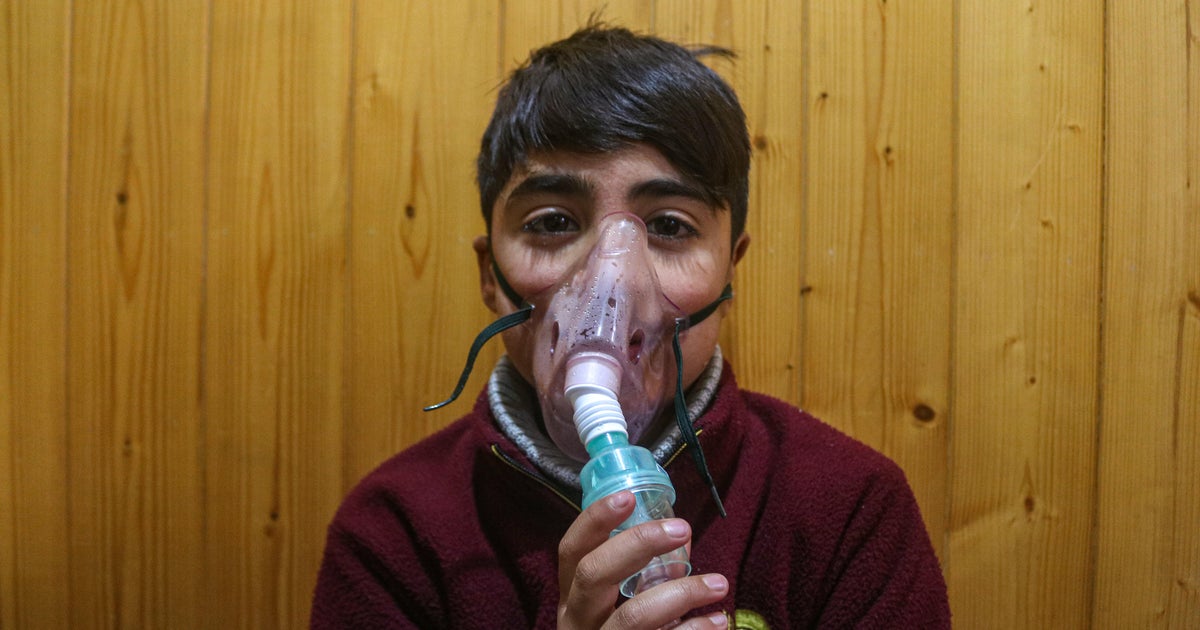Teachers union "not convinced" social distancing can safely be cut to 3 feet
The nation's second-largest teachers union sent a two-page letter to the Biden administration on Tuesday questioning the decision to reduce the recommended social distancing in schools to three feet between students.
On Friday, the Centers for Disease Control and Prevention (CDC) reduced its recommendation for social distancing within schools to prevent the spread of COVID-19 from six feet to three feet, citing studies of limited virus transmission and similar recommendations from the World Health Organization and the American Academy of Pediatrics.
"These updated recommendations provide the evidence-based roadmap to help schools reopen safely, and remain open, for in-person instruction," CDC Director Rochelle Walensky said in a statement last week.
But on Tuesday, Randi Weingarten, president of the 1.7-million-member American Federation of Teachers, told Walensky and Education Department Secretary Miguel Cardona that while she and her members "trust the CDC ... to provide them with accurate information," they have concerns about the recent changes. The letter was obtained by CBS News.
"We are not convinced that the evidence supports changing physical distancing requirements at this time," Weingarten wrote. "Our concern is that the cited studies do not identify the baseline mitigation strategies needed to support 3 feet of physical distancing."
Weingarten also questioned the scientific foundation of the social distancing studies: "[T]hey were not conducted in our nation's highest-density and least-resourced schools, which have poor ventilation, crowding and other structural challenges."
The letter also cites a review by the Institute for New Economic Thinking, a group that criticized "free market fundamentalism, fiscal austerity, financialization and corporate influence in politics," and also wonders if "3 feet of distancing is sufficient protection."
In February, the CDC recommended six feet of social distancing for all students and staff. Some health officials, including a group from Harvard's T.H. Chan School of Public Health, has been arguing since November that 3 feet of social distance could be used for younger students. Now, the CDC agrees and says three feet of social distancing is good enough for elementary students and middle and high school students in areas of low COVID-19 community transmission. Six feet of social distancing between adults and adults and students in schools is still recommended.
Weingarten and the AFT are advocating the following "at a minimum" for additional requirements:
- Universal and correct masking;
- Effective ventilation;
- Thorough cleaning of buildings;
- Regular COVID-19 testing of teachers, staff and students;
- Effective contact tracing and quarantine/isolation protocols; and
- Making vaccines available to all eligible people in schools.
"Weakening one layer of layered mitigation demands that the other layers must be strengthened," said Weingarten.
The teachers union also posed several questions about the practicality of the Biden administration recommendations, including whether teachers must "remain in one spot at the front of the room the entire day" in order to abide by adult social distancing recommendations and whether social distancing recommendations apply to school buses, too.
Finally, Weingarten questioned the timeline for implementing these recommendations, acknowledging that even with the influx of $122 billion to schools nationwide from the American Rescue Plan, "districts lack the human resources and institutional planning ability to make changes like this quickly."
The union letter comes a day before the Biden administration hosts its "National Safe School Reopening Summit" on Wednesday, which will focus on implementing current CDC guidance in schools, technical assistance for school administrators and supporting students.
President Biden's goal for reopening schools is "a majority of K-8 schools safely open in 100 days," which means meeting a deadline of April 30. The federal government is still in the process of acquiring its own data on school openings and closings, but the president's goal has already been met, according to an outside analysis.
As of March 21, 81.9% of K-12 students throughout the country are attending some form of in-person instruction, according to the Burbio School Opening Tracker. The total number of K-12 students attending classes only virtually continues to decrease, with 18.1% students in virtual-only mode as of this week.
High school students are the least likely to be in the classroom right now, with 23.2% of older students learning solely virtually, according to the data.
The Biden White House has not yet announced a goal for reopening high schools.




